Who is Sword Casting Guy?
Greg Wenderski, the Sword Casting Guy, is a tinkerer, metal artist, sword historian, and former science teacher. He has built catapults, crossbows, fighting robots, and child-sized tandem bicycles with his students. Once, when his students were studying the Greeks in Ancient Civilizations class, and were fascinated by metallurgy, he built a casting foundry and began casting Bronze Age style swords with them. He expanded his sword casting classes to audiences of all ages in Austin and all around the US. He teaches two types of hands-on sword making classes that enable participants to explore themes of archaeology, metallurgy, and physics in the process of making a Bronze Age sword.
Bronze Age Sword Casting
Our classes aim to recreate the key steps in making a Bronze Age sword, while making the process accessible to participants of all skill levels. In the interest of time, our casting technique uses modern equivalents to ancient tools, such as substituting propane and a venturi burner for more traditional charcoal and bellows. At each point where our process differs from that of the historical Bronze Age, we discuss the obstacles our ancestors overcame to accomplish the same task and the ingenious methods they devised to solve them. At every turn, there are occasions to marvel at the sheer ingenuity of our ancestors as they learned to harness fire and master the art of metallurgy.
Choose From These Bronze Age Patterns
The Bronze Age swords that we cast come from history and all have a story. With many to choose from, we have selected a handful for their interesting stories and their ability to cast well in our process. They are broadly grouped into two types by their different uses: thrusting and striking. Thrusting swords are pointed on the end and sharpened on two edges. Their center of balance is toward the hilt, allowing better control of the tip when thrust forward. Striking swords have a single cutting edge and a thin back edge to add stiffness and mass to the cut. The center of balance is further toward the tip. Here are the patterns you can choose to cast in class.
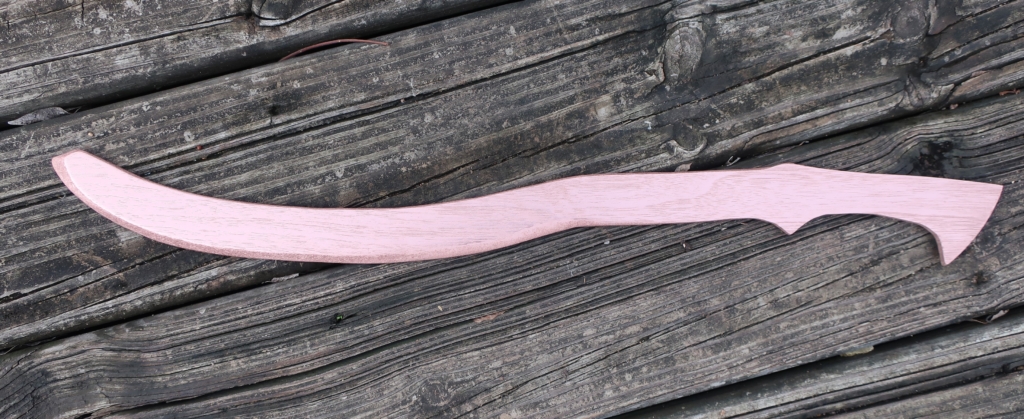
Assyrian Sickle Sword
This sword first appeared in the Fertile Crescent around 2500BC and was used by the Hyksos to conquer the Nile delta in Egypt. It is called a sickle sword because it resembles a harvesting sickle, although the outside edge is sharpened rather than the inside edge.
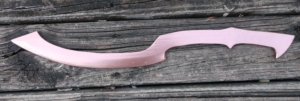
Egyptian Khopesh Sword
One of the first true swords, the khopesh was adapted from the Hyksos and became Egypt’s primary blade weapon. This distinctive version is patterned after the two found in King Tut’s tomb.

Kris Knife
Originally from Malaysia, a kris is believed by some to have magical powers. They were seldom used for fighting and were primarily ceremonial, though they are a longtime favorite of children and devious individuals in our class.

Kris Sword
A larger variant of kris, this one was designed by a student in one of my classes. In battle, the wavy edge can be useful in redirecting the blade of an opponent.

Xiphos
One of the best known Bronze Age swords, the leaf bladed xiphos was used by Greek foot soldiers as a secondary weapon. They fought in the famous phalanx formation, wielding spears and standing shoulder to shoulder with their large concave shields protecting the soldier to their left.
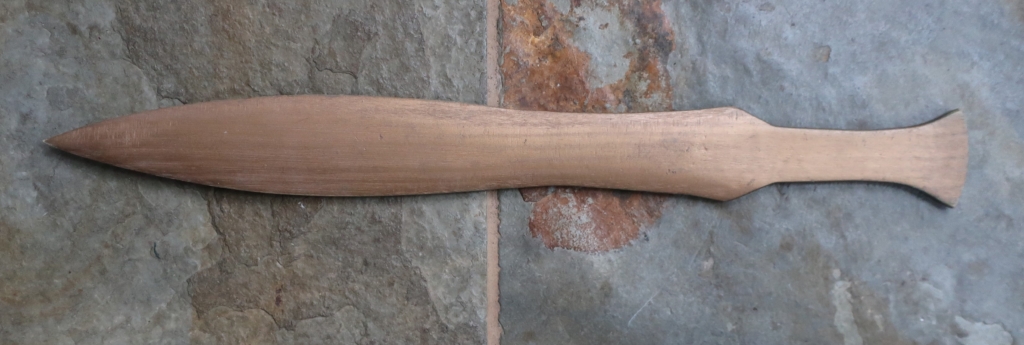
Spartan Sword
Similar in design to the xiphos, but shorter, this sword later influenced the design of the Roman gladius. It resembled the Hobbit swords in Lord of the Rings and is a class favorite for people who have shorter arms.
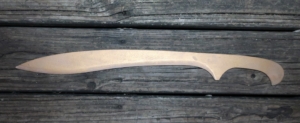
Makhaira
This curved blade sword was used by Greek mounted cavalry and was designed to deliver a slashing blow while moving at high speed. The kukri from Nepal has a very similar design.
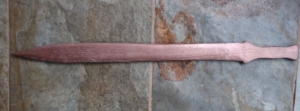
Wilburton Sword
The Wilburton sword is a leaf bladed English sword from the late Bronze Age and preceded the later Ewart Park sword.
Sword Casting Guy In The News
Word has really spread about my classes in the last year, especially due to several appearances on hit YouTube channel How To Make Everything (HTME) A while back I helped Andy cast a bronze sword from bronze he made himself, and another from melted pennies. I’ve also helped him cast a bronze harvest sickle and a couple historic axes to aid him in his effort to recreate early technologies from scratch!
You can find us in the media in several places:
- Rooster Teeth: We show Ellie how to cast a bronze khopesh in the event of an Apocalypse
- HTME: How Many Pennies to Cast a Sword?
- Spectrum News: We showed them a little about our sword casting summer camp
- BestAustin: The Walter White of History Class
- HTME: Casting a Bronze Age Sword
- HTME: Casting an Axe Worthy of Thor Using Primative Technology
- Austin360: Go Back to the Bronze Age with Austin’s Sword Casting Guy
- St. George News: Local Students Learn to Make Swords from Molten Metal
